Bolivia possesses a rich heritage carved into its monuments, towering cathedrals, grand statues, and neoclassical palaces that reflect centuries of Indigenous tradition, colonial rule, and national pride. These officially recognised monuments in Bolivia stand as powerful symbols of the cultural identity and historical evolution of the country. From those spiritual and age-old basilicas to heroic memorials in bustling plazas, stories are told from these sites through Bolivian soil. Spanning across colourful cities such as La Paz, Sucre, Cochabamba, and Potosí, these monumental structures are a must-see for tourists.
Top 10 Monuments In Bolivia
Explore monuments and their ancient Tiwanaku ruins and colonial churches so each tells a different story of the country’s vibrant history.
1. Basilica Of San Francisco, La Paz
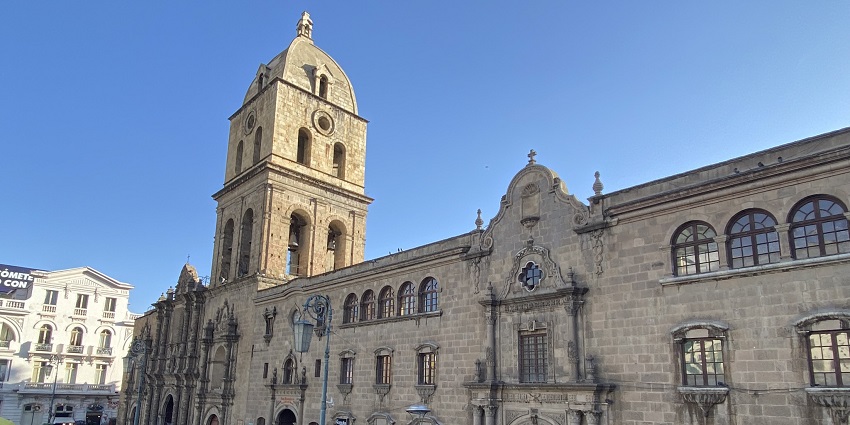
Photo: Yastay / Wikimedia Commons
The Basilica de San Francisco La Paz is one of the most important religious and architectural landmarks in Bolivia. Built in the 16th century and reconstructed in the 18th century, the basilica exemplifies a compelling fusion of mestizo baroque architecture with indigenous Aymara motifs. While the exterior stone façade carefully integrates both entirely native and wholly Catholic symbols, the interior is stunning with its gold leaf altars, intricately carved wooden paraphernalia, and colonial paintings. The basilica has a museum and rooftop tours to view the city of La Paz, which is steeply sprawling underneath the snow-capped Andes.
Entry Fee: Bs. 20 / ₹240
2. Cristo De La Concordia, Cochabamba
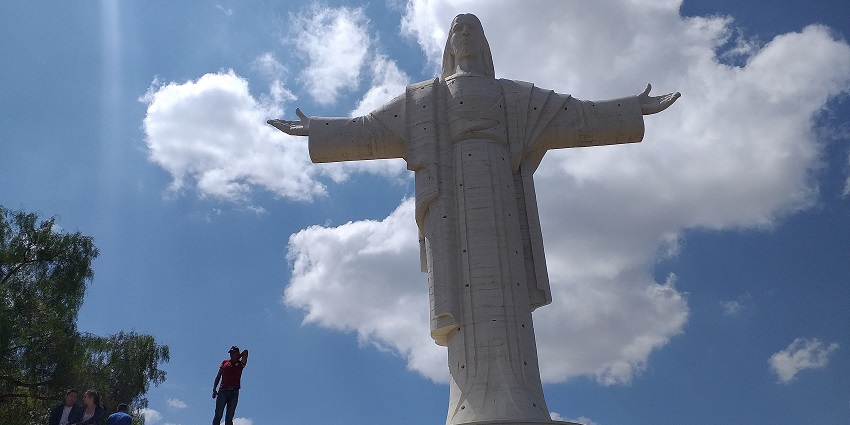
Photo: Edilson Trujillo Álbarez / Wikimedia Commons
Cristo de la Concordia, located in Cochabamba, Bolivia, stands as one of the tallest representations of Christ in the world. This impressive statue, reaching 34.2 metres (112.2 feet), not including its pedestal, is located on San Pedro Hill, overlooking the city. The monument attracts thousands of tourists each year due to its impressive views of Cochabamba. Finished in 1994, it represents peace and unification, and its name literally means “Christ of Peace”. The statue can be accessed by cable car, road, or hiking more than 2,000 steps. Additionally, within the statue, a spiral staircase provides access to viewing platforms.
Entry Fee: Bs. 15 / ₹180
3. Monument To Eduardo Abaroa, La Paz
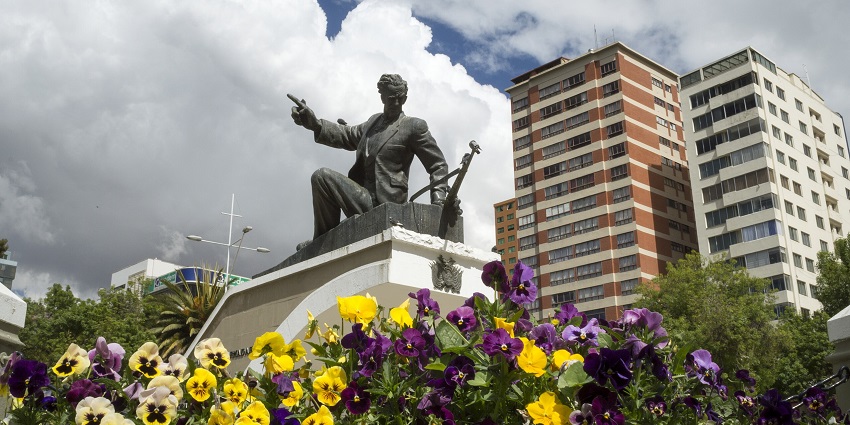
Photo: Emiliano Luján / Wikimedia Commons
The La Paz Eduardo Abaroa Monument is one of the most monumental and important monuments in Bolivia, dedicated to a national hero of the War of the Pacific. Found at Plaza Abaroa, the statue celebrates Eduardo Abaroa’s courage and victory during the 1879 battle against Chile, when he became famous for not wanting to surrender, defending Bolivia. The bronze statue shows him holding a rifle, representing his love for the country and resistance. Plaques and carved figures of Bolivian soldiers and civilians who aided the war cause surround the monument.
Entry Fee: N/A
4. Cathedral Basilica Of Our Lady Of Peace, La Paz
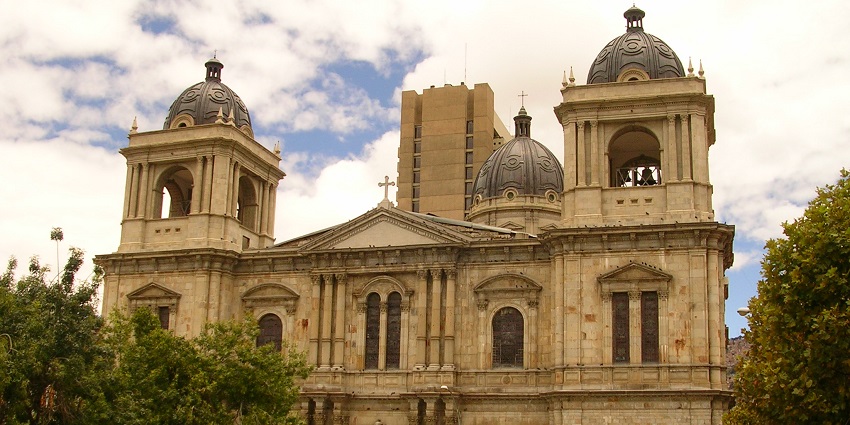
Photo: Elemaki / Wikimedia Commons
The Cathedral Basilica of Our Lady of Peace in La Paz is an impressive representation of Bolivia’s colonial and religious history. It was finished in 1989, taking the place of older churches from the 1600s. The building has a striking neoclassical style mixed with some baroque features. The basilica’s extensive façade with five domes and two towers overlooks much of the city, while the dazzling interior highlights include lavish altars, stained glass, and other art pieces and displays the heavy Catholic roots in Bolivia’s history.
Entry Fee: N/A
5. Metropolitan Cathedral Of Sucre

Photo: Maria Cristina Tajima / Wikimedia Commons
The Metropolitan Cathedral of Sucre, within the old centre of Sucre, the constitutional capital of Bolivia, stands as a remarkable example of colonial-era architecture and religious significance. Construction spanned the 16th to 18th centuries, showcasing aspects of both Renaissance and Baroque styles. Colonial-era stonework, fascinatingly forged wooden carvings, unfinished gilded altars, and intricate styles are on glorious display as part of the cathedral. Further insight into Bolivia’s religious history can be found in the adjacent Museo Eclesiástico, where religious artefacts and paintings from the colonial era are on display.
Entry Fee: Bs. 10 – 20 / ₹120 – 240
6. Monument To Simón Bolívar, Sucre
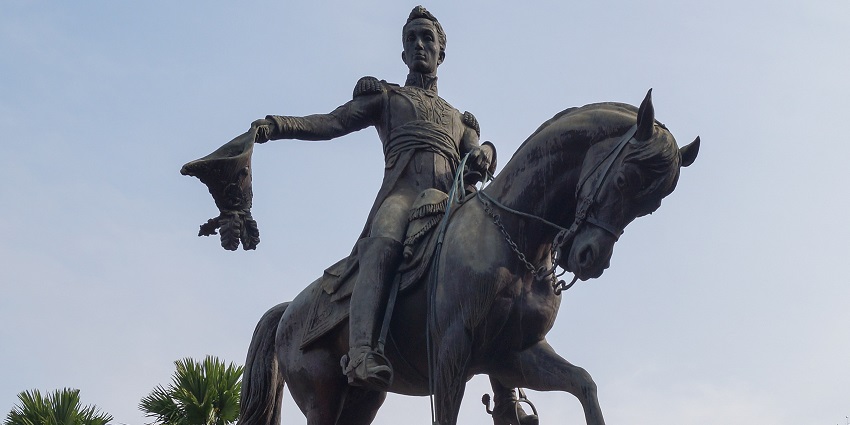
Photo: Rjcastillo / Wikimedia Commons
The Monument to Simón Bolívar in Sucre occupies a position of significant importance within the city’s civic and historical landscape. Situated in Plaza 25 de Mayo, the majestic equestrian statue immortalises Bolívar in mid-gallop, symbolising his tenacity, determination, and visionary foresight. Carved in bronze and sitting atop a stone pedestal, the monument is encircled by immaculately kept gardens and historic colonial buildings, making it a focal point of Sucre’s civic and cultural life. Dedicated to celebrating Bolívar’s role in freeing South America from Spanish rule, the monument is also used for national celebrations and civic events as a gathering site.
7. Monumento A La Virgen Del Socavón

Photo: Sainzlaurita / Wikimedia Commons
Monumento a la Virgen del Socavón is one of Bolivia’s most highly regarded religious monuments, located in Oruro. This gigantic 45-metre statue pays tribute to the Virgin of the Socavón, the patron saint of miners, and the main character of the world-renowned Oruro Carnival, which is recognised by UNESCO as a cultural event. This monument, which was finished in 2013, is situated on top of Santa Bárbara Hill, affording breathtaking views of Oruro and the surrounding area. Inside the structure, you can climb up through various views and screens, as well as various religious displays.
Entry Fee: 3 Bs. / ₹37 for nationals and 10 Bs. / ₹123 for foreigners
8. Dakar Monument
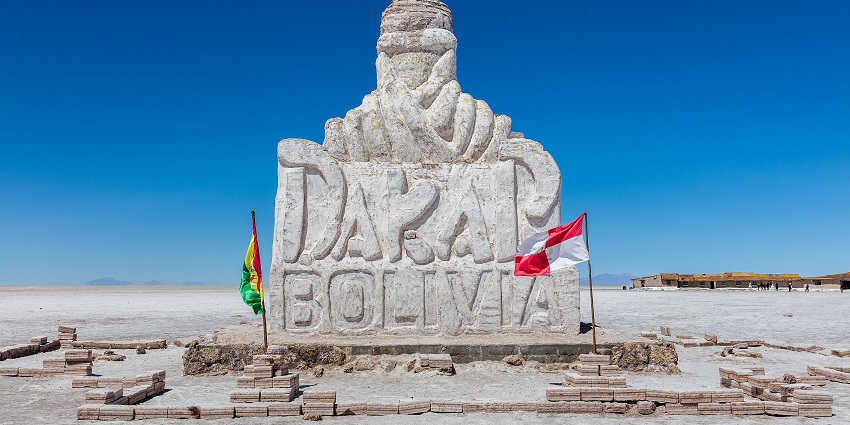
Photo: Diego Delso / Wikimedia Commons / Image For Representation Only
The Dakar Monument in Bolivia is a visually spectacular celebration of one of the world’s most recognised checkpoints in a powerful off-road race, called the Dakar Rally, which crossed through Bolivia between 2014 and 2018. It is located in the Uyuni Salt Flats (the world’s largest salt flats); the monument is almost 10 feet tall (and is all made of salt bricks) and features the Dakar Rally logo as a symbol of Bolivia being part of the extreme off-road race. The monument is surrounded by an endless sea of white salt and colourful flags from around the world.
Entry Fee: N/A
9. Puma Punku
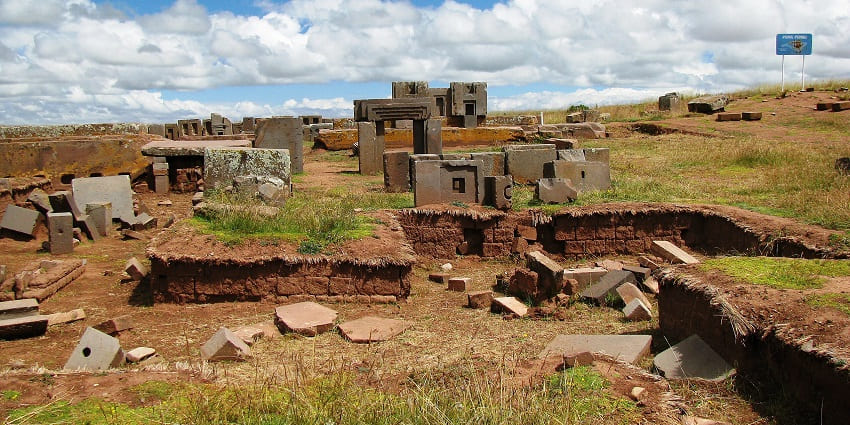
Photo: Brattarb / Wikimedia Commons / Image For Representation Only
Puma Punku is one of the most incredible archaeological sites and monuments in Bolivia, known for its accurate stonework and uncertainties about its origins. Located near Tiwanaku, this site dates back over 1200 years and is believed to have been part of a prominent pre-Incan civilisation. Puma Punku has many large sandstone and andesite blocks, some of which weigh several tonnes, with stones expertly cut and fitted without the use of mortar and with excellent precision. The level of engineering and craftsmanship at Puma Punku has left researchers and historians baffled for decades.
Entry Fee: Bs. 100 / ₹12
10. Casa De La Libertad (House Of Freedom)
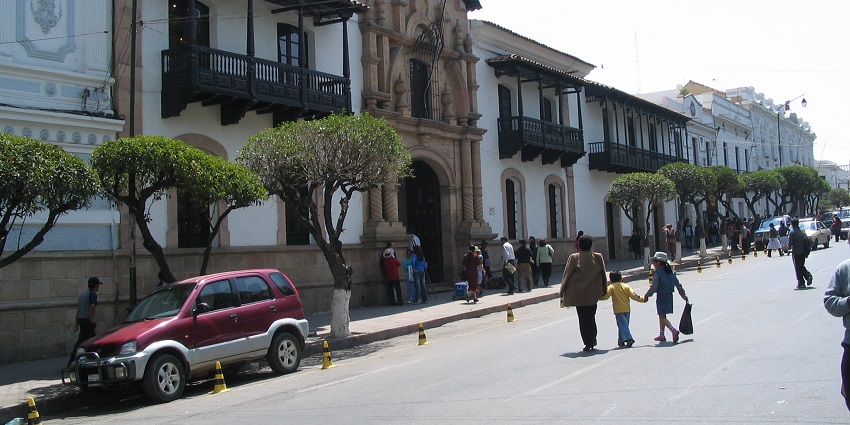
Photo: Jimmy Gilles / Wikimedia Commons / Image For Representation Only
Casa de la Libertad, or House of Freedom, is located in Sucre, the nation’s constitutional capital, and is a well-known colonial building where Jesuits originally built a chapel in the early 1600s. The House of Freedom became nationally important in 1825 when the Act of Independence was signed here, and Bolivia came into existence as a sovereign state. Today, Casa de la Libertad functions as a museum containing historical documents, images of national heroes, and items representative of the independence movement of Bolivia.
Entry Fee: 10 Bs. / ₹123 for nationals and 15 Bs. / ₹135 for foreigners
The monuments in Bolivia are rich representations of Bolivia’s culture, history and identity. These majorly landmarks represent everything from cathedrals and statues to palaces. These monuments offer a deep exploration of Bolivia’s spiritual history, revolutionary spirit, and colonialism. While it may just appear that you are visiting a monument, it’s also an opportunity to feel the spirit of the traditions and legacy of Bolivia’s past. Plan a trip with TripXL and explore the culturally enriching monuments.
Cover Photo: Erik Garcia Alvarado / Wikimedia Commons


 WhatsApp
WhatsApp
 Twitter
Twitter









